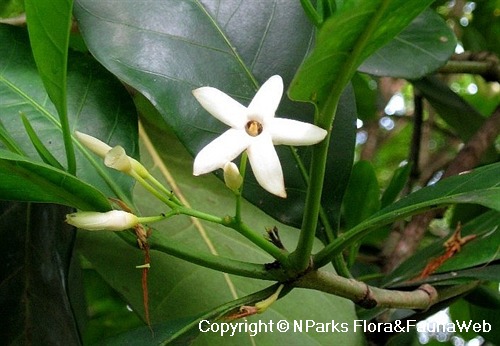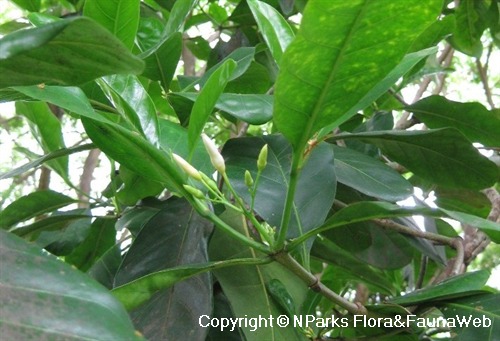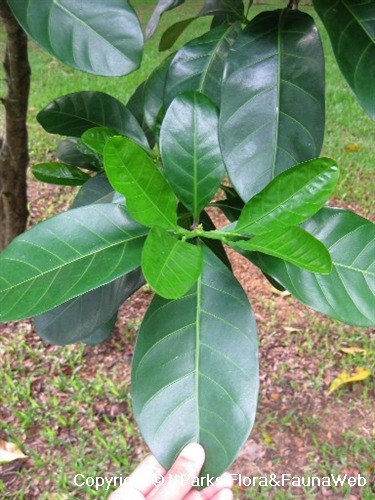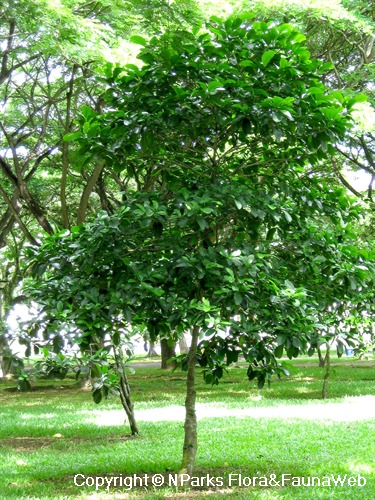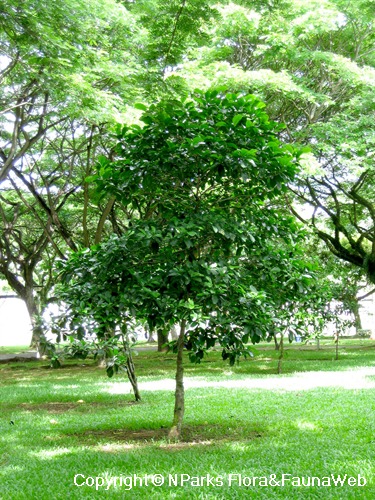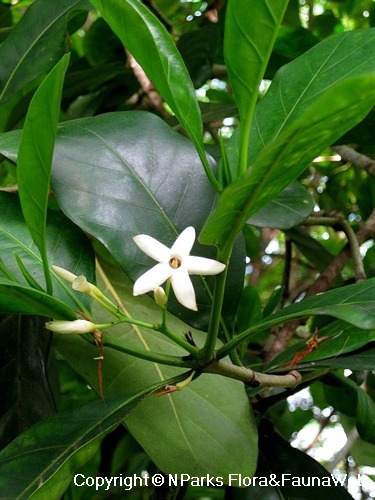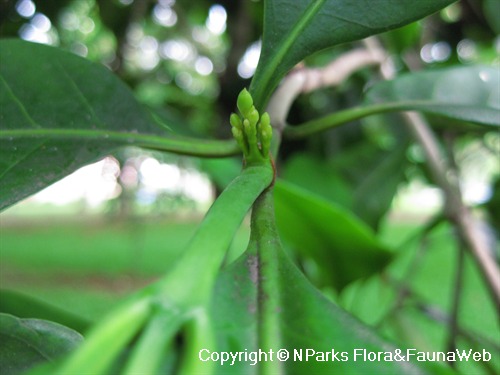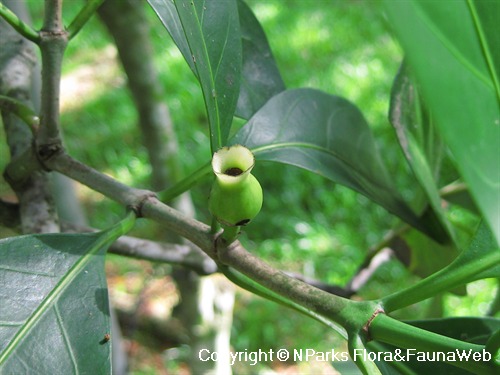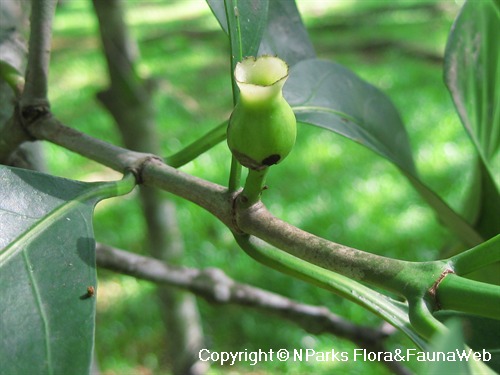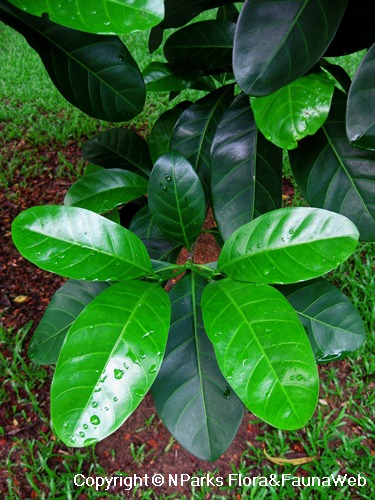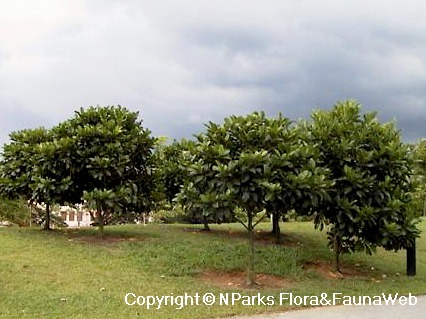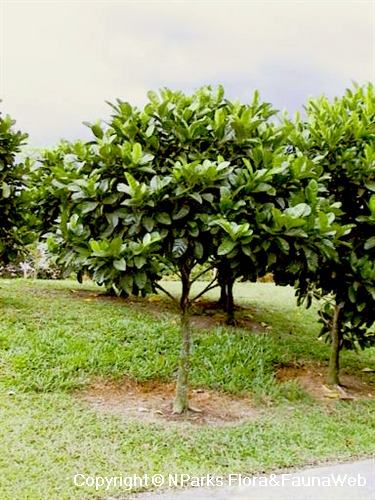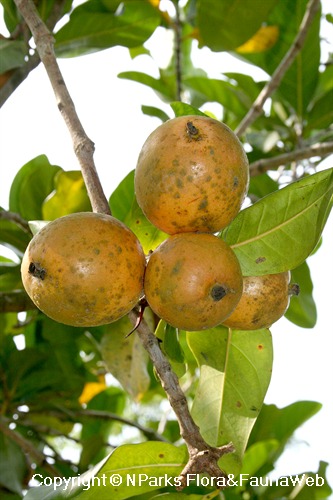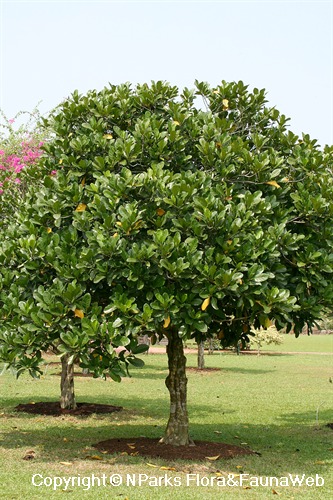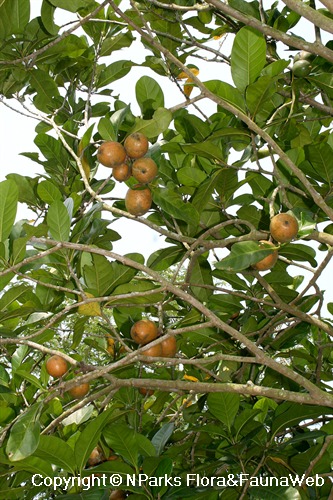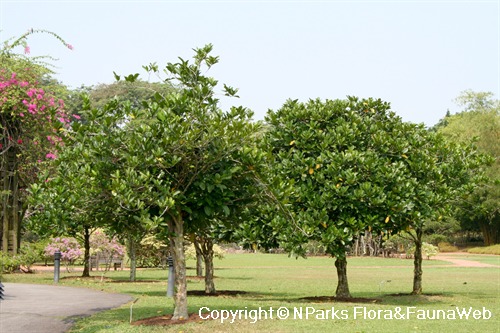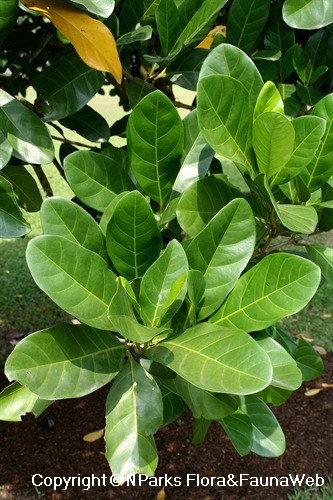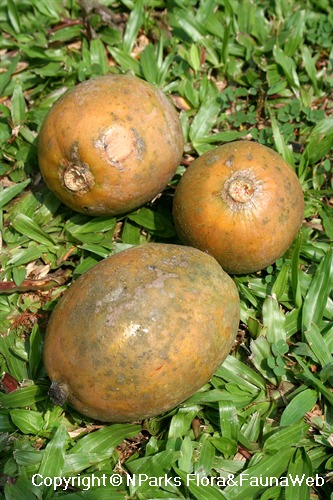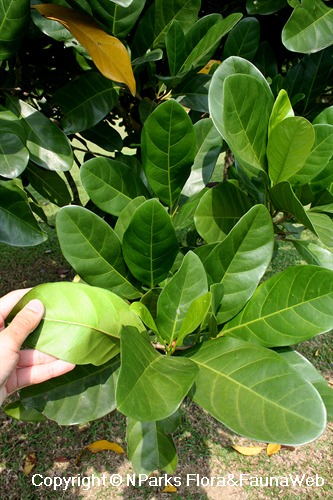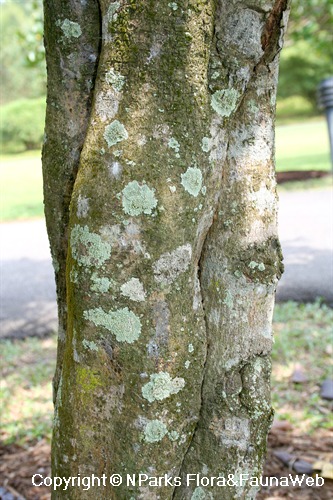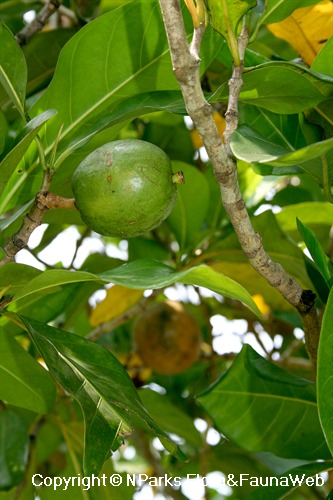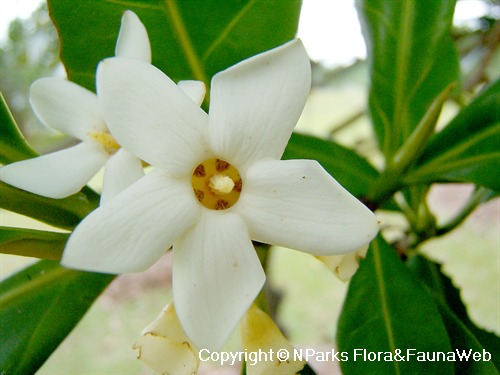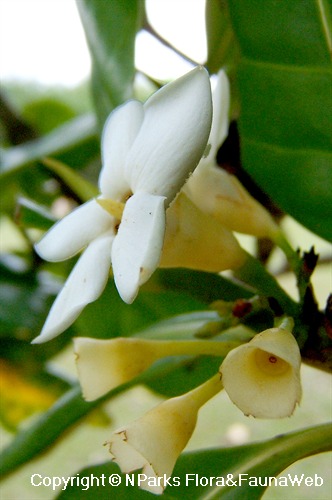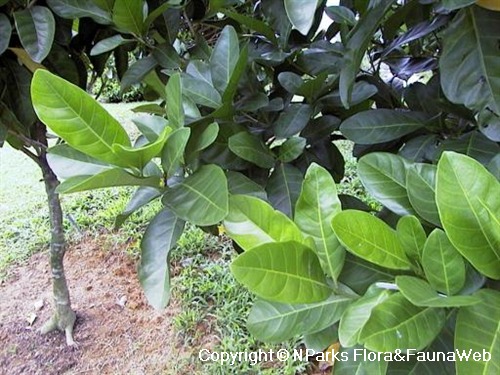
Back
Atractocarpus fitzalanii (F.Muell.) Puttock
| Family Name: | Rubiaceae |
| Synonyms: | Gardenia fitzalanii, Trukia fitzalanii, Randia fitzalanii |
| Common Name: | Brown Gardenia, Yellow Mangosteen |
Name
Classifications and Characteristics
| Plant Division | Angiosperms (Flowering Seed Plants) (Dicotyledon) |
|---|---|
| Plant Growth Form | Shrub, Tree (Small (6m-15m), Shrubby (1m-5m)) |
| Lifespan (in Singapore) | Perennial |
| Mode of Nutrition | Autotrophic |
| Maximum Height | 3 m to 6 m |
| Maximum Plant Spread / Crown Width | 2 m to 4 m |
Biogeography
| Native Distribution | Australia (NE Queensland) |
|---|---|
| Native Habitat | Terrestrial (Monsoon Forest) |
| Preferred Climate Zone | Sub-Tropical / Monsoonal |
| Local Conservation Status | Non-native |
Description and Ethnobotany
| Growth Form | Small tree or big shrub, usually 3-6 m tall, sometimes up to 10m. |
|---|---|
| Foliage | Leaves dark glossy green, with prominent veins. |
| Flowers | Species is monoecious (male and female flowers on same plant ), or dioecious (separate male and female plants). Flowers white, star-shaped, produced in leaf axils or at ends of branches, with Gardenia-like scent, where female flowers are reported to be more fragrant than male flowers. Flowers last 1-2 days before being shed. |
| Fruit | Large (10cm across), round to slightly pear-shaped, ripen from green to yellow or light orange, containing several small seeds, edible raw, with slighty dry sweet flavour. |
| Habitat | Native to coastal rainforests, mainly along forest margins or water courses. |
| Cultivation | Relatively slow-growing. Drought-tolerant when established. |
| Etymology | Genus epithet 'Atractocarpus' means 'spindle fruit' in Greek, a reference to the shape of fruits -- broadest in the middle, tapering towards the ends. |
| Ethnobotanical Uses | Edible Plant Parts : Edible Fruits Food (Fruit or Vegetable) Others: Raw fruits traditionally eaten by Aboriginal people in Australia. |
Landscaping Features
| Desirable Plant Features | Fragrant (Flowers) (Day), Ornamental Flowers, Ornamental Fruits |
|---|---|
| Landscape Uses | Container Planting, General |
| Thematic Landscaping | Economic Garden, Naturalistic Garden |
Fauna, Pollination and Dispersal
| Fauna Pollination Dispersal Associated Fauna | Bird-Attracting |
|---|
Plant Care and Propagation
| Light Preference | Semi-Shade, Full Sun |
|---|---|
| Water Preference | Moderate Water |
| Plant Growth Rate | Moderate |
| Rootzone Tolerance | Drought Tolerant |
Foliar
| Foliage Retention | Evergreen |
|---|---|
| Mature Foliage Colour(s) | Green |
| Mature Foliage Texture(s) | Smooth, Glossy / Shiny |
| Foliar Type | Simple / Unifoliate |
| Foliar Arrangement Along Stem | Opposite |
| Foliar Shape(s) | Non-Palm Foliage (Oval, Elliptical) |
| Foliar Venation | Pinnate / Net |
| Foliar Margin | Entire |
| Foliar Apex - Tip | Acute |
| Typical Foliar Area | Mesophyll ( 45cm2 - 182.25 cm2 ) |
| Leaf Area Index (LAI) for Green Plot Ratio | 4.0 (Tree - Dense Canopy) |
Floral (Angiosperm)
| Flower & Plant Sexuality | Unisexual Flowers , Monoecious |
| Flower Colour(s) | White |
|---|
| Individual Flower Shape | Stellate / Star-shaped |
| Flower Lifespan on Plant | [Remarks] ( ) |
| Flower Lifespan on Plant - Remarks | Flowers last 1 - 2 days on plant before dropping. |
| Flowering Habit | Polycarpic |
Fruit, Seed and Spore
| Mature Fruit Colour(s) | Orange, Yellow / Golden |
|---|---|
| Fruit Classification | Simple Fruit |
| Fruit Type | Fleshy Fruit |
Image Repository
Others
| Master ID | 1806 |
|---|---|
| Species ID | 3099 |
| Flora Disclaimer | The information in this website has been compiled from reliable sources, such as reference works on medicinal plants. It is not a substitute for medical advice or treatment and NParks does not purport to provide any medical advice. Readers should always consult his/her physician before using or consuming a plant for medicinal purposes. |

